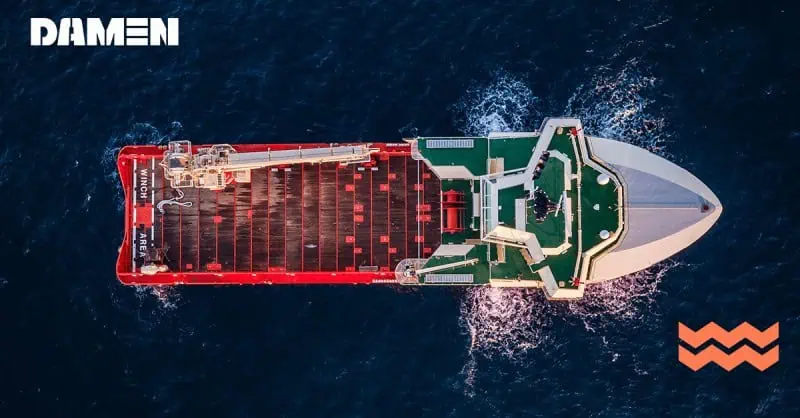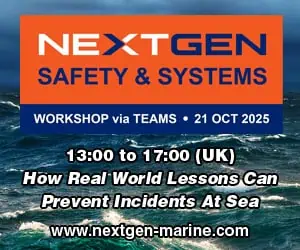ollaboration and innovation in the search for the alternative marine fuels
No subject is more topical in the maritime industry right now than that of sustainable shipping. It’s literally to be found wherever you turn; this year’s World Oceans Day had the theme of Innovation for a Sustainable Ocean. The UN’s maritime division, the International Maritime Organization’s (IMO) World Maritime Theme for 2020 is Sustainable Shipping for a Sustainable Planet.
A decade of increasing sustainability in the maritime industry
Proposing the theme, IMO secretary-general Kitack Lim said, “I believe this theme will provide flexibility to the secretariat and the member states in highlighting the myriad topics and challenges in meeting the 2030 Sustainable Agenda… 2020 will mark the beginning of a decade of action and delivery. It will be a decisive decade, not only for shipping, but life on the planet.”
One thing is for sure, if we are to live more sustainably, then eco-friendly shipping is going to play an important role. With over 11 billion tonnes of goods shipped each year and rising relevance for maritime roles in food and energy production, the industry is a key stakeholder. As Mr Lim said: “Here at the IMO, ensuring safe, secure, sustainable shipping is our core mission, recognising that shipping itself is the carrier of world trade and vital to sustainable development.”
Shipping and climate change: reducing emissions
In addition to its work towards the UN’s 2030 agenda and its associated Sustainable Development Goals, the IMO and its member states have set themselves an ambitious goal – the reduction of shipping emissions by at least 50% by 2050 compared to 2008 levels.
“The shipping industry, with the support of the IMO regulatory framework, has already started the transition towards this sustainable future,” said Mr Lim, going on to explain the many different sustainable shipping initiatives.
“We have adapted and continue to develop measures to cut greenhouse gas emissions, reduce the Sulphur content of ships’ oil, implement the Ballast Water Management Convention, protect the polar regions, reduce marine litter, improve the efficiency of shipping through the electronic exchange of information, meet the challenges of digitalisation of shipping and enhance the participation of women in the maritime community.”
Amongst these multiple challenges, there is one that stands out, according to Mr Lim. “Climate change is the biggest issue facing the maritime industry, impacting everything from the ship design to engine and fuel choice, as well as operational procedure.”

Facing the future: improving ship fuel efficiency
Within the climate change challenge, one aspect takes precedence – the search for alternative marine fuels. Edmund Hughes, the IMO’s former head of air pollution and energy efficiency and now director of his own consultancy, Green Marine Associates, agrees with this assessment.
“The IMO strategy talks about going from 300 million tonnes of carbon fuel a year to zero in 80 years – that’s maybe three ship lifecycles – and at least 50% reduction by 2050. The only way that’s going to be achieved is with alternative fuels.”
However, he says that previous experience suggests that such shifts take time.
“It’s a huge challenge. For example, we’ve been talking for years about gas as a fuel for ships and it’s required investment from companies and for the technology to be made available, it’s required regulatory changes. It’s taken 20 years until we start to see penetration of gas in the market.
“Already there’s been some analysis done via the Global Maritime Forum on alternative fuels and this found production and supply would cost between 1 and 1.4 trillion dollars – just to achieve the 2050 ambition.”
Collaborating, regulating, innovating: a formula for sustainable shipping
Increasing maritime sustainability, Mr Hughes says is going to require both collaboration and legislation. “To achieve this there are going to have to be partnerships with stakeholders in and outside the sector. The shipping companies alone are not going to be able to deliver the necessary infrastructure. And there is going to have to be regulation to give certainty to the market – that allows the market to maintain the level playing field, which is vital to shipping.
This is why the IMO strategy, even though it’s not mandatory, is so important, because it’s a clear sign of intent from the governments of the world that this is where shipping has to go.
“The transition could be a real opportunity for some countries. There are developing countries in Africa, for example, that have access to a lot of solar power. Or it could be South America where they’ve got abundant natural resources.
“There is the potential for countries that are net importers of energy to become net exporters. That changes the game completely. Finding energy is a key for many governments and they will take this seriously if there is real potential. Shipping could be the vehicle from which they develop these fuels. And at some point they are going to have to get those fuels away and I would guess this is going to be by ship.”
According to the IMO, technological innovation is going to play a central role in the industry’s search for alternative marine fuels and other sustainable solutions – an assessment with which Damen wholeheartedly agrees.
Damen, for example, is working towards becoming the world’s most digitally connected shipbuilder. Already the results of these efforts are paying off, resulting in more efficient operations with reduced fuel consumption and shipping CO2 emissions.

The nine vessels Damen is building for Aqualiner-Swets’ Waterbus service feature a mix of hybrid and electric designs
Mr Lim: “It has been said that the next 10 or 20 years will see as much change in shipping as we have experienced in the past 100 years. The integration of new and advancing technologies is a key strategic direction for IMO.”
Mr Lim has stated his opinion that advancements in technologies – including digitalisation – will usher in structural changes in the industry, enhancing not only the face of eco-friendly shipping, but also safety improved traffic management.
Implementing industrial innovation is not without its challenges though, especially given the long lifecycle of ships.
Sharing the burden, spreading the risk
Mr Hughes: “Shipping is a conservative sector. People don’t necessarily want to be the leader of the pack in spending money on new technology and new fuels that are not yet tested and proven. You build ships for 20-30 years – sometimes even longer.
“Having said that, there will be those out there who recognise innovation as part of their DNA, who will want to be the leaders. They may have to take a risk or two, but I’m sure some will be prepared to do that because they recognise it will bring a competitive advantage in the long run.”
Here, he says, the shipyards and equipment manufacturers have an important role to play.
“Their role is vital. These ships are going to require new technology to enable them to operate more efficiently. It’s very difficult though, because the shipyards and OEMs have got to serve the current market demands as well.
“The only way for this to be done is for yards and equipment manufacturers to work very closely with their core customers and make sure they are meeting their goals. I’m not saying this is impossible, but it’s certainly a challenge and there is a need for everyone to work together.”

Read more about sustainable shipping initiatives at Damen.









